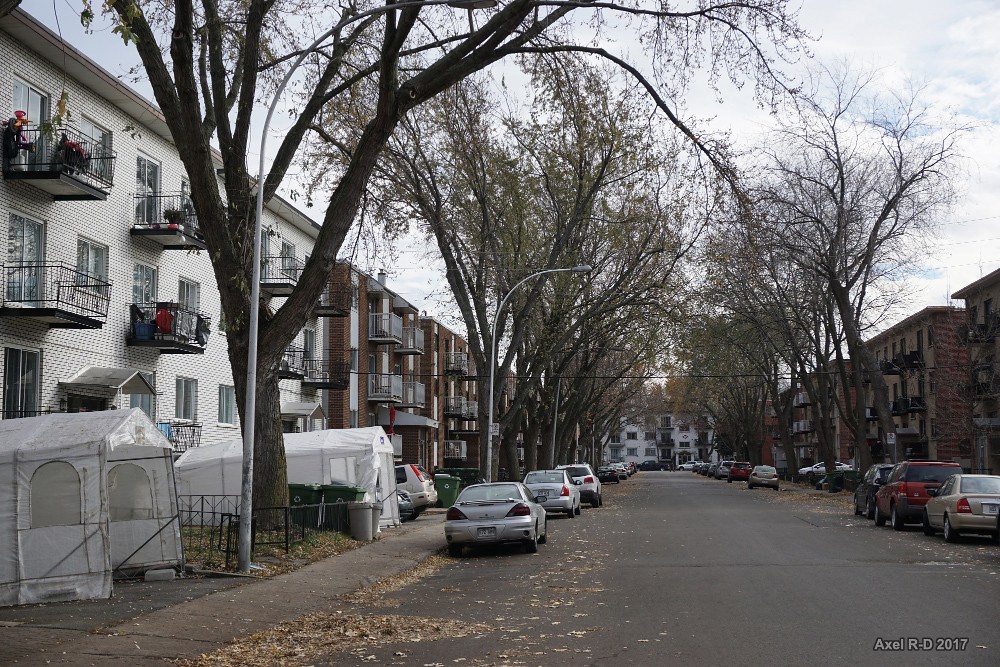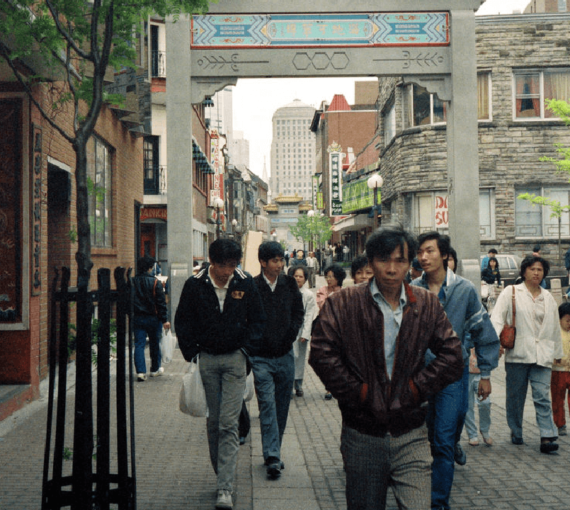
“Even though it was not at the root of Hoodstock’s mission, we’re fighting against systemic inequalities and for social justice.” (Photo: Axel Drainville)
Interview with Hoodstock president and co-founder Nargess Mustapha and members Dalila Awada, Fatima Gabriela Salazar Gomez and Cata Ramirez
In 2009, members of the Montreal North community founded Hoodstock to ensure residents’ voices were finally heard after a Montreal Police Department officer shot and killed 18-year-old Fredy Alberto Villanueva.
While the organization is still actively promoting socio-economic solutions to violence and crime, anti-speciesist and anti-racist activist Dalila Awada said “Even though it was not at the root of Hoodstock’s mission, we’re fighting against systemic inequalities and for social justice.” Today “that includes climate justice; it’s an inescapable issue. It’s sort of imposed itself. In the next few years, it will be the central issue. We’ll be in more and more emergency situations and will have to mobilize daily.”
Cata Ramirez said the environment is not a topic easily broached with populations that have demanding jobs and are daily confronted with precariousness. “A central issue in ecological commitment is the question of time,” Cata said. “Montreal North is a neighbourhood full of cultural and ethnic diversity. Often people work in essential but underpaid and undervalued care jobs. They have less time to spare for the climate cause.”
Environmental racism
To add to the challenge, Montreal North is living under environmental risks that would likely not be tolerated by the public and institutions if they were experienced elsewhere. For example, the schoolyard of Adélard-Desrosiers Elementary School — which has the highest poverty rate of all Quebec schools — is bordered on two sides by two underground oil pipelines. The situation was revealed by the media in 2017, but since then the public space has been almost silent, despite the fact that the pipelines pose a significant risk to drinking water for the entire region.
This situation is a form of environmental racism. The Montreal borough has the fourth highest percentage of people identifying as members of a visible minority. “The reason it’s racism is because when the risks of pipelines on human health and the environment affect devalued, dehumanized populations, they are tolerated,” Dalila said. “‘We don’t care a bit about the consequences that it has in their lives’ would not be the case elsewhere.” She and her colleagues wonder “How come there aren’t protests every day?”
This is not the only glaring injustice Montreal North has to deal with. It has “3.9 per cent green space where the average [of the total area] of Montreal is 11 or 12 per cent,” Cata said. “With the pandemic, we saw the need to be able to socialize at a distance. We saw how it affects people’s health. Beyond the greenery, these multipurpose spaces can serve a neighbourhood in many ways,” and are important places for physical activity.
To add to the challenge, Montreal North is living under environmental risks that would likely not be tolerated by the public and institutions if they were experienced elsewhere.
Fatima Gabriela Salazar Gomez highlighted the institutional failure and collective indifference that allow this situation, arguing that “The burden should not just be on us! It’s the responsibility of all. We live in pessimism, we feel powerless, while this is a collective responsibility.” The neighbourhood is isolated from public transportation networks. “It becomes an electoral advertisement to promise subway lines,” she said. “But, in reality, the population is ignored.” The team would like to see elected officials and institutions be proactive in the community’s health and well-being, and act in the service of the population, which knows its own needs.
Cata emphasized that changes to procedures are necessary. “When elected officials make decisions, yes, they must include the people of the neighbourhood,” she said. “But they can’t just create consultation tables and then say ‘that’s it, the community is represented.’ They must really include them and their perspectives, which do not always fit within the mainstream. Do they really integrate our cultural codes, our social codes?”
Residents’ expertise must also be recognized financially. “It’s one thing to ask the communities what the best ways to do things are, but it’s still volunteering,” Cata said. “It’s amazing how much more volunteer time is being asked of these [most marginalized] communities. There is more and more talk in climate justice of paid time to revalue communities’ knowledge and epistemologies that diverge from dominant models.”
Maladjustments
The neighbourhood is familiar with environmental and climate maladaptation, which the Intergovernmental Panel on Climate Change defines “as inadequate adaptation measures that may lead to an increased risk of adverse climate-associated consequences, increased or shifted vulnerability to climate change, or worsened living conditions.”
Hoodstock president and co-founder Nargess Mustapha decries how disconnected some measures are from the communities they are supposed to serve. “Politicians in power offer cosmetic responses, but their work never goes in depth,” Nargess said. “On Jubainville Street a few years ago, the elected officials put three large garbage, compost and recycling bins in the middle of the street, and ended up creating three times as many problems. Everyone had to put their garbage there. Some people with limited mobility couldn’t access it. It was piling up during the week, just sitting there. It stunk, it wasn’t very cool. The initiative was recognized, they won an award — that’s nice, but does it meet the needs?”
Fatima Gabriela agrees and insists that even when some ideas seem interesting at first, “There is so much lack of support when initiatives are set up that they fail and they don’t really reach us.” While the socio-ecological transition must pass through the reinforcement of social fabric to establish the solidarities and community power necessary to face the ecological crisis, there are obvious limits to repeating recipes that have worked elsewhere. “Next door to me, they decided to renovate an old gas station to create a space for exchange and discussion,” she said. “But I have never seen a single person chill there. It’s as if they had thrown in a common space like those in Rosemont [a wealthier neighbourhood] saying that it will work for Montreal North because it was a success in Rosemont. The reality is that we don’t have the same way of life, we don’t have the same neighbourhood culture, the same conception of neighbourhood life.”
If the normalization of the infringement on the fundamental rights of certain people should never be tolerated, for Dalila, racism and dehumanization are also brakes to climate action for the whole society.
She reiterates that environmental justice is a processual issue. “When we talk about justice, it means to adapt well, to be sure we’ve understood the cultural conceptions, the life habits of the people in the neighbourhood, beyond simply saying that we’re implementing measures that work elsewhere.”
If the normalization of the infringement on the fundamental rights of certain people should never be tolerated, for Dalila, racism and dehumanization are also brakes to climate action for the whole society, because “When we think of all the tragedies, of the climate refugees who try to flee their countries, we set a barrier between us and them. It’s people who ‘are used to misery anyway, they can’t expect more anyway.’ They have ‘less value,’ it’s not verbalized like that, but… All this logic of racist dehumanization, it slows down the changes we need to make for climate justice.
“It’s because there are populations that experience the worst effects of climate change first that we tell ourselves we still have time — because they’re going to be a protective buffer between us and natural disasters.”


